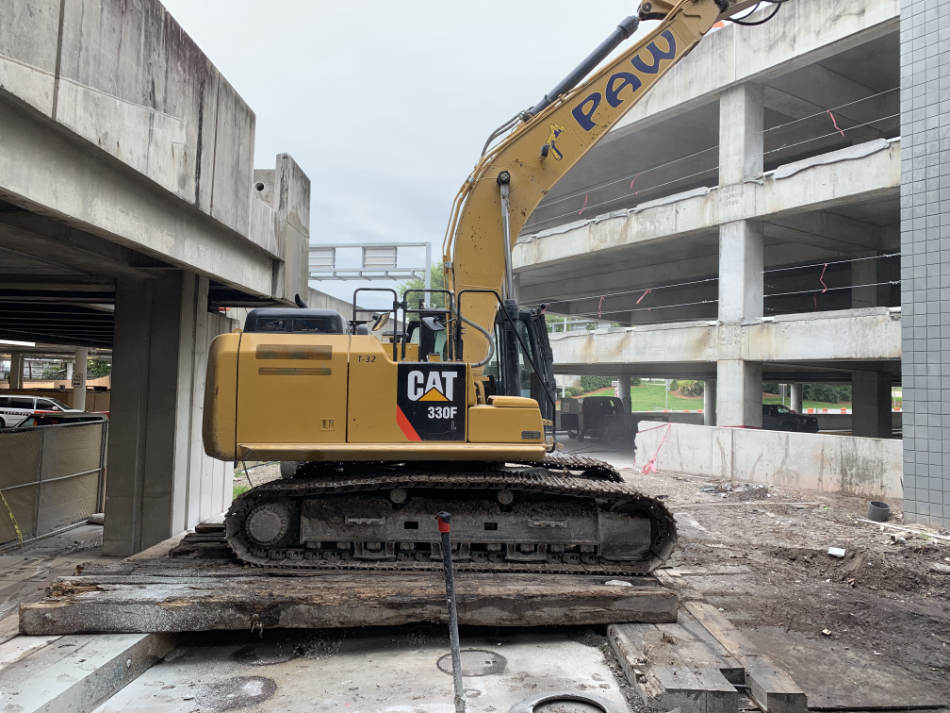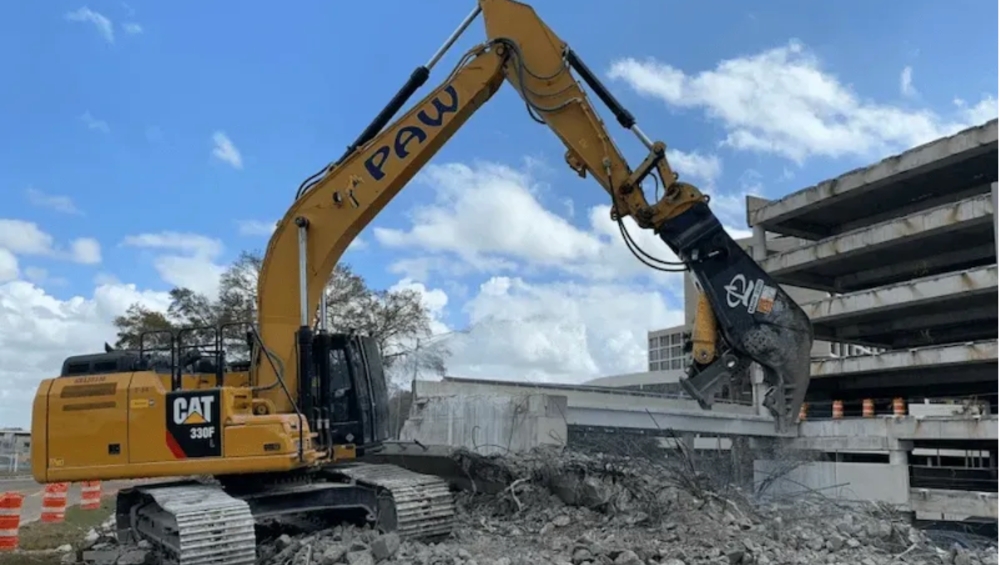Demolition is a necessary part of progress. Whether it’s tearing down an outdated building to make way for something new or clearing a site after storm damage, demolition is often the first step in development.
But while it plays a key role in shaping our built environment, its environmental consequences are often overlooked and in places like Port Richey, Florida, where coastal ecosystems and residential areas are closely connected, those impacts matter more than ever.
From dust and noise to tons of debris and hidden toxins, demolition can take a serious toll on the environment if not managed responsibly.
With construction and demolition (C&D) waste making up a significant portion of landfill material in the U.S., the way we demolish buildings isn’t just a technical issue, it’s an environmental one.
In this article, we’ll break down what demolition really costs our environment, how regulations in Florida shape demolition practices, and what sustainable alternatives are available.
Whether you’re a homeowner planning a remodel, a developer working in Port Richey, or just someone interested in greener construction practices, you’ll find practical insight here.
The Scope of Demolition and Its Growing Demand
Demolition isn’t just about knocking things down. It’s a complex, regulated industry that’s evolving with our cities and communities.
In recent years, the demand for demolition services has grown alongside urban redevelopment, population growth, and the need to modernize aging buildings.
Port Richey, a small city experiencing steady development, is no exception. Types of demolition vary widely from full-scale tear-downs of commercial buildings to selective removal of parts of a structure for remodeling.
Residential demolition is often tied to hurricane-damaged homes or outdated structures, while commercial and industrial demolitions support business growth and infrastructure upgrades.
As these projects become more frequent, so does the environmental impact. The increase in activity brings with it more debris, more emissions, and more potential for environmental harm, unless better practices are implemented.
Major Environmental Concerns from Demolition
Demolition can affect the environment in multiple ways, many of which aren’t immediately visible. These concerns often fly under the radar but have real consequences for public health and ecological stability.
Air pollution is one of the most noticeable side effects. Dust, particulate matter, and even asbestos fibers can be released during demolition, especially if materials like old insulation or drywall are disturbed.
These particles can worsen respiratory conditions and linger in the air for days. Water contamination is another risk, particularly in coastal areas like Port Richey.
Rainwater runoff can carry pollutants like lead, paint, and construction debris into nearby water bodies. This is especially dangerous when demolition sites are near storm drains or natural waterways.
Noise pollution also affects nearby communities, especially when demolitions are conducted in residential neighborhoods. Prolonged exposure to high-decibel activity can affect not just human health but also local wildlife.
Finally, there’s the issue of landfills. Much of the debris generated during demolition ends up in landfills, putting pressure on already-limited waste management systems and contributing to long-term pollution.
Demolition Waste: What Happens to the Debris?
The sheer volume of waste produced by demolition is staggering. Construction and demolition debris is one of the largest sources of solid waste in the United States and a significant portion of it comes from demolition alone.
Most of this waste includes materials like concrete, bricks, wood, drywall, metals, glass, and roofing. While many of these materials are technically recyclable, they often aren’t sorted on-site and end up in landfills.
This is especially problematic when hazardous materials like asbestos, lead paint, or mercury from old electrical systems are involved. These substances can leak into the soil and groundwater if not handled properly.
In Florida, the Department of Environmental Protection (DEP) has implemented rules to reduce the environmental burden of C&D debris, but enforcement and compliance vary.
In Port Richey, smaller contractors may lack the resources or training to follow best practices consistently, adding to the challenge.
The good news? More companies are investing in recycling programs and salvage operations, helping divert materials from landfills and giving them a second life in new construction.
Sustainable Demolition Practices
Sustainable demolition isn’t just a buzzword, it’s a necessary evolution in how we approach building removal.
One key method is deconstruction, where structures are dismantled piece by piece to recover usable materials.
This approach reduces waste, lowers emissions, and often uncovers high-quality lumber or fixtures that can be reused.
Recycling is another major pillar of sustainable demolition. Materials like metal, concrete, and wood can often be processed and used again.
Some companies specialize in crushing concrete on-site to create fill material for new projects, cutting down on transportation costs and emissions.
Eco-conscious demolition also involves reducing the use of fossil fuels and emissions from heavy machinery.
This can include scheduling work during off-peak hours to reduce congestion, using newer, more efficient equipment, or even integrating electric tools and vehicles.
In Florida, and particularly in Port Richey, integrating these practices can help protect delicate ecosystems and coastal areas.
Sustainable demolition not only makes environmental sense but can also lower project costs when done strategically.
Regulations and Environmental Compliance in Florida
Demolition in Florida is governed by a range of environmental and safety regulations designed to limit its impact.
Contractors must follow guidelines set by the Florida DEP, the Environmental Protection Agency (EPA), and local building authorities.
One of the key requirements is proper handling and disposal of hazardous materials.
Before a structure is demolished, a certified inspector must identify and remove asbestos-containing materials, lead-based paints, and other regulated waste.
In Port Richey, additional oversight may come from municipal building codes and zoning rules.
Permits are required for most demolition projects, and improper handling of debris can result in fines or work stoppages.
Contractors must also keep detailed records of material disposal, especially if they’re transporting waste to certified recycling facilities.
These rules not only ensure safer practices but also help track progress toward sustainability goals statewide.
How Homeowners and Developers Can Minimize Impact
For individuals planning a demolition project, whether it’s knocking down an old home or clearing land for development, there are practical steps that can significantly reduce environmental impact:
- Hire a sustainable demolition contractor
Look for professionals who specialize in eco-friendly methods and ask about their recycling protocols and certifications. - Conduct a hazardous materials audit
Identify asbestos, lead paint, or mold before demolition begins to ensure safe and compliant removal. - Plan the project timeline strategically
Choose dry months to reduce runoff risk and schedule work during daylight to cut energy use and community disruption. - Reuse and donate materials when possible
Cabinets, fixtures, bricks, and other components may be accepted by salvage yards or donation centers, reducing landfill waste.
These simple but effective choices help protect the environment and often lead to smoother, more affordable projects in the long run.
Innovations and Future of Green Demolition
Technology is transforming the demolition industry. From robotic demolition tools that can precisely remove walls without damaging nearby structures to AI-powered systems that sort debris by material type, innovation is making demolition cleaner, safer, and more efficient.
Low-emission and electric-powered machines are now being used on job sites to cut down on air pollution.
These machines are especially useful in densely populated areas where air quality is a concern.
There’s also growing interest in circular construction where materials from one demolition project are systematically reused in new buildings.
This approach closes the loop on material waste and encourages smarter building design from the start.
Case studies across the U.S. show that green demolition isn’t just feasible, it’s cost-effective and increasingly in demand.
Port Richey can be part of this shift, especially with the right partnerships between local governments, contractors, and community members.
FAQs About the Environmental Impact of Demolition
What types of materials in demolition waste can be recycled?
Common recyclable materials include concrete, wood, metal, glass, asphalt, and some types of plastics. These can often be repurposed for road base, new construction, or raw manufacturing materials.
Is demolition waste hazardous?
Some demolition waste can be hazardous, especially if it contains asbestos, lead-based paint, or old chemical storage. A pre-demolition audit helps identify and safely manage these risks.
How is demolition regulated in Port Richey, FL?
Demolition projects in Port Richey must comply with Florida DEP regulations and local building codes. Permits are required, and contractors must handle hazardous waste according to state and federal laws.
Can homeowners choose sustainable demolition options?
Yes, many contractors offer eco-friendly demolition services. Homeowners can ask about recycling, salvage opportunities, and equipment that reduces emissions or noise.
What’s the difference between demolition and deconstruction?
Demolition typically involves quick teardown using heavy machinery, while deconstruction is a slower process focused on salvaging reusable materials. Deconstruction is more sustainable but may cost more upfront.

Safe, efficient teardown services backed by 30+ years of local experience.
What This Means for You
Whether you’re a resident of Port Richey planning a remodel or a contractor working on your next big project, understanding the environmental impact of demolition isn’t just good citizenship, it’s smart business.
Sustainable demolition practices are gaining momentum for a reason: they save money, protect our health, and preserve the ecosystems we depend on.
Choosing the right partners, following the law, and thinking beyond the landfill can make a meaningful difference.
The next time you see a structure come down, remember, it’s not just the end of a building. It’s the beginning of a new opportunity to build smarter, cleaner, and more responsibly.



